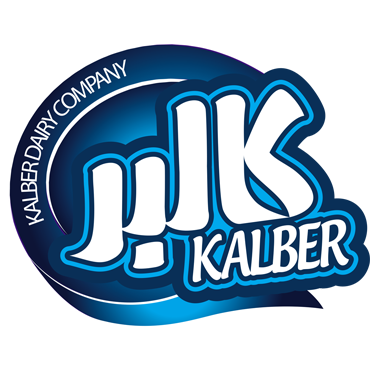Milk Matters: Comparing Sterilized and Pasteurized Milk for Your Daily Consumption and Healthy Lifestyle
When it comes to choosing the right type of milk for your daily consumption, you may find yourself faced with various options on the market. Two of the most popular choices are UHT milk and pasteurized milk. Both offer distinct benefits and drawbacks and understanding their differences can help you make an informed decision about which one best suits your preferences and needs.
Table of Contents
1. Introduction
2. What is UHT Milk
3. What is Pasteurized Milk
4. Flavor and Taste
5. Nutritional Content
6. Shelf Life
7. Processing Methods
8. Environmental Impact
9. Availability and Cost
10. Digestibility
11. Cooking and Baking
12. Convenience and Storage
13. Health Considerations
14. Conclusion
Introduction
In today's dairy market, consumers have a wide range of milk options to choose from. Among them, UHT (Ultra High Temperature) milk and pasteurized milk stand out as popular choices. Each of these milk types undergoes a distinct processing method, resulting in different flavors, nutritional profiles, and shelf lives.
What is UHT Milk
Sterilized milk, also known as long-life milk, undergoes a special pasteurization process where it is heated to a very high temperature for a brief period, effectively killing harmful bacteria. This process not only extends its shelf life but also allows it to be stored at room temperature until opened. In the industry, milk is typically subjected to a temperature of 135 degrees Celsius for 5 seconds. Sterilized milk is often favored for its convenience and suitability for areas with limited refrigeration.
It should be noted that KALBER Dairy Company is one of the major producers of sterilized milk, which manufactures low-fat, half-fat, and full-fat milk in two volumes of 200 cc and one liter, which are exported to Iraq, Afghanistan, Pakistan, UAE, etc.
What is Pasteurized Milk
Pasteurized milk, on the other hand, undergoes a milder heat treatment to eliminate harmful pathogens while preserving its taste and nutritional content. In the industry, milk is commonly heated at a temperature of 72 degrees Celsius for 15 seconds. This milk is typically stored in refrigerated conditions and must be consumed within a certain period. Pasteurization aims to strike a balance between safety and maintaining the milk's inherent properties.
Flavor and Taste
When it comes to flavor and taste, pasteurized milk tends to have a creamier and more natural taste compared to UHT milk. The lower heat treatment of pasteurization allows the milk to retain more of its original flavors, making it a preferred choice for those who appreciate the authentic taste of milk.
Nutritional Content
In terms of nutritional content, both sterilized and pasteurized milk are rich sources of essential nutrients such as calcium, vitamin D, and protein. However, due to the higher heat involved in UHT processing, there may be a slight reduction in some heat-sensitive vitamins. Pasteurized milk, with its milder processing, retains more of these delicate nutrients.
Shelf Life
One of the key advantages of UHT milk is its significantly longer shelf life. The high-temperature treatment destroys more bacteria and enzymes, resulting in milk that can be stored for months without refrigeration. Pasteurized milk, while offering good shelf life, requires refrigeration and has a shorter window for consumption. Sterilized milk can be stored at room temperature for 4 to 6 months. However, after opening the packaging, it must be refrigerated and consumed within a maximum of 5 days. The exact shelf life of sterilized milk is indicated on its packaging
Processing Methods
The primary distinction between UHT and pasteurized milk lies in their processing methods. Sterilized milk is exposed to higher temperatures for a shorter time, while pasteurized milk undergoes a gentler heat treatment. This variance in processing impacts not only taste and nutritional content but also the overall quality and characteristics of the milk.
Environmental Impact
From an environmental perspective, sterilized milk generally has a lower carbon footprint due to its extended shelf life and reduced need for refrigeration during storage and transportation. Pasteurized milk, while still a relatively eco-friendly option, may have a slightly higher environmental impact due to its shorter shelf life and refrigeration requirements.
Availability and Cost
Both UHT and pasteurized milk are widely available in most grocery stores. However, sterilized milk may be more accessible in areas with limited refrigeration options. In terms of cost, sterilized milk often comes at a slightly higher price point due to its longer shelf life and convenience.
Digestibility
Some individuals may find sterilized milk easier to digest due to the high-temperature treatment that breaks down certain enzymes. Pasteurized milk, with its milder processing, may be gentler on the digestive system for others. Personal preferences and sensitivities play a role in determining which type of milk is more suitable for individual digestive needs.
Cooking and Baking
When it comes to cooking and baking, both sterilized and pasteurized milk can be used interchangeably in most recipes. However, due to its slightly altered taste and texture, some chefs and bakers may prefer the results achieved with pasteurized milk, especially in recipes that highlight the milk's flavor.
Convenience and Storage
The convenience factor is a significant consideration for many consumers. Packaging: The aseptic envelope consists of multiple layers, including an outer protective layer, a barrier layer to prevent external elements, an inner layer for direct milk contact, and an aseptic seal to maintain sterility. UHT milk's ability to be stored at room temperature until opened provides a level of flexibility that pasteurized milk can't match. This feature makes UHT milk an attractive option for travelers, students, and those with limited access to refrigeration.
Health Considerations
In terms of health considerations, both UHT and pasteurized milk are safe and nutritious options for most individuals. The choice between the two largely depends on personal preferences, dietary restrictions, and individual health needs.

Read More: Unveiling the World of Juices: Fruit and Drink Juices Explained
Conclusion
In the debate of UHT milk vs. pasteurized milk, there is no definitive winner. Each type of milk offers its own set of advantages and disadvantages, catering to different preferences and lifestyles. Whether you prioritize convenience, taste, or environmental impact, making an informed choice will ensure that you select the milk that best aligns with your values and needs.
To contact the Kalber Dairy Export Department, please refer to the Contact Us section.
Read More: Flavored Milk Processing

-min.webp)

 (2).webp)
.webp)
.webp)